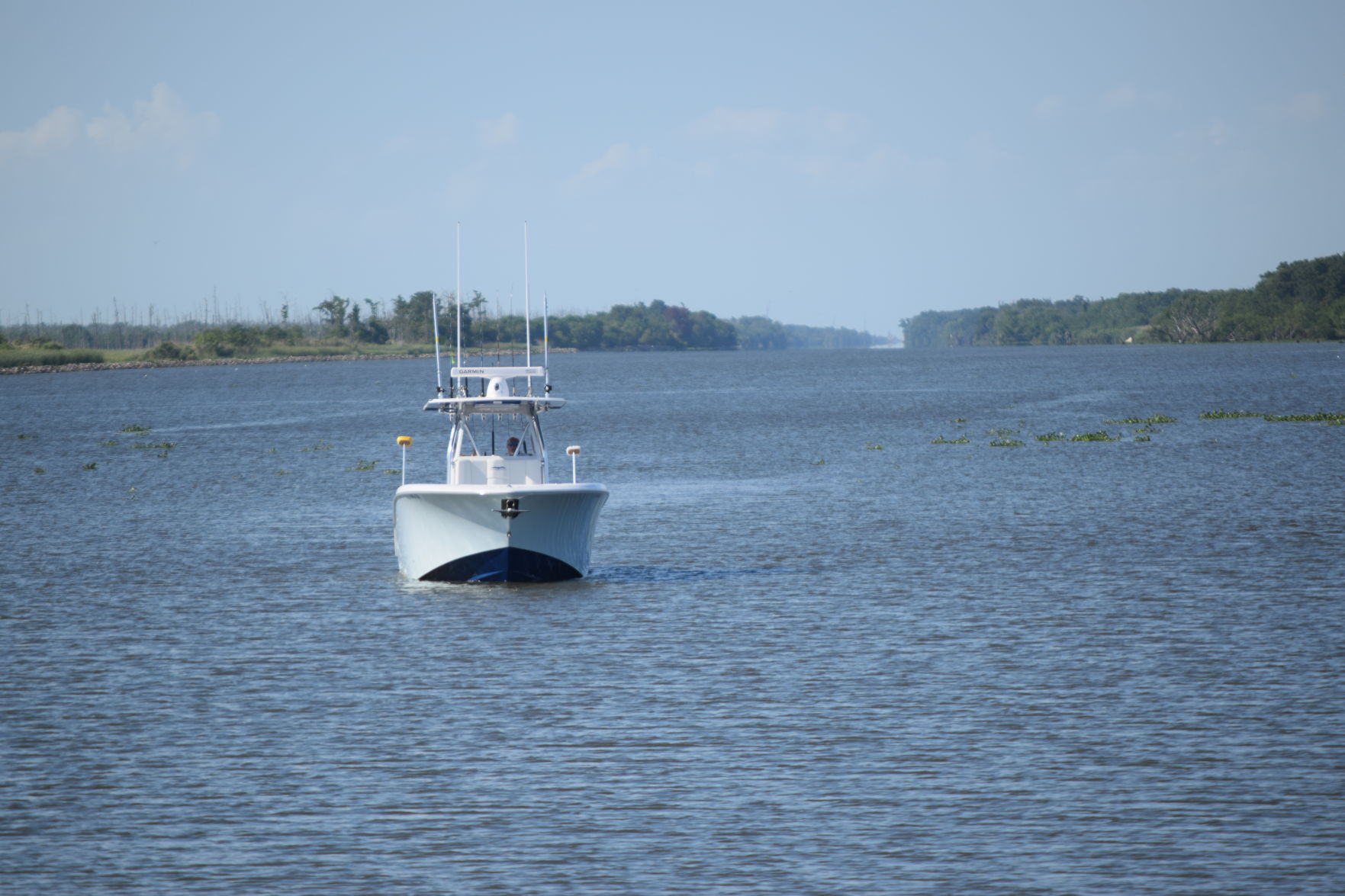
Dianna Cheramie
July 12, 2016
Plaisance named Interim Athletic Director at Nicholls
July 13, 2016Government and port officials in Terrebonne Parish say chronic federal underfunding for dredging of a crucial waterway has reached crisis stage, and are knocking on doors in Washington D.C. for help.
The Houma Navigation Canal extends northwest from Cat Island Pass for about eight miles across Terrebonne Bay, cutting up through the heart of Terrebonne Parish for 23 miles, intersecting with the Gulf Intracoastal Waterway at Houma.
The problem is one of simple physics; ships and boats that travel the waterway need water beneath them to float and not scrape bottom. That means the canal must be dredged to a minimum depth of 15 feet, or boats and ships can’t pass through. For oilfield supply and marine firms, silting of the channel means no access, or costly detours, and that costs money.
This year, Parish President Gordon Dove said, the money budgeted by the U.S. Army Corps of Engineers for dredging of a key portion of the channel – a 10-mile stretch through open water near the Gulf of Mexico subject to silting – is short by two-thirds.
“The HNC channel must, I repeat must, be dredged to a 15-foot navigable depth,” Dove said. “This is vital for the economy of Terrebonne Parish and we must and will continually address this situation. The Corps drastically underfunded the project.”
Port of Terrebonne Executive Director David Rabalais said he is pinning his hopes on a funding partnership being negotiated with the help of Rep. Steve Scalise, R-Metairie.
“We need $3 million per year and the Corps gave us $1.1 million for this year. You can’t dredge just a third, you need to dredge all the way through,” Rabalais said. “That’s like building a fence halfway around your yard and you wonder why the dog keeps getting out.”
Asked for comment on the matter, Scalise said Friday that he is clear about the importance of dredging the HNC to its authorized depth to creating jobs and strengthening Terrebonne’s economy.
“Finding the necessary money for this much-needed project should be a top priority for the Army Corps,” Scalise said. “I will continue working with local and federal stakeholders so we can secure a viable source of funding as quickly as possible.”
The Dulac Pontoon Bridge, which crosses the canal at Falgout Canal Road, is one of two crossings within Terrebonne Parish. Although not all the vessels that require its opening require the depth proper dredging would accommodate, officials say its activity is still a good indicator of marine traffic. Parish records show that last year the bridge opened 8,596 times for vessels; Openings numbered 7,892 in 2014 and 8,844 in 2013.
The biggest boats passing through are platform support vessels ranging from 280 to 320 feet.
While the minimum required dredging depth for the canal is 15 feet, the Corps is authorized to dredge at a 17-foot depth, which is referred to as “advanced maintenance.”
“This year, to meet the authorized depth, 1,200,000 cubic yards of material must be dredged from the channel,” Rabalais said. “The majority of the dredging occurs from mile zero, through Cat Island Pass, to mile 10. This section of the canal is in open water and it easily silts in during east and west currents. The silt material in this area turns into a fine powdery dust when dried, thus is not good material for beneficial use. The material is not adequate for anything except clogging a channel.”
“The HNC is the main artery to the heartbeat of this region’s local economy and when it gets silted in our industry goes into cardiac arrest,” Rabalais explained, using yet another metaphor to make his point. “Multi-million dollar jobs are lost anytime the channel is not maintained. A vessel that requires 14 feet of water won’t navigate through sand bars at 13 feet and will go elsewhere for repair and maintenance.”
Rabalais and Dove tried explaining to senators and congressmen how the Bayou Region pioneered marine fabrication and vessel repair, but is slowly losing hold of its market share.
“Local industry can’t survive if the entire channel is not dredged yearly to the federally authorized depth,”: Rabalais said. “If a tree fell across an interstate it would be removed right away but if a sandbar forms in a channel it takes an act of congress to get it dredged.”
In addition to Scalise, the group met with Sen. David Vitter R-La and Rep. Garret Graves R-Baton Rouge. Staff members working for Sen. Bill Cassidy R-Baton Rouge and Rep. Charles Boustany, R-Lafayette, also met with the Terrebonne visitors.
“We told our story to anyone who would listen and our Congressional Delegation not only listened but are pursuing solutions as a team.” Rabalais said. “We were well received and I’m very confident that something will get done for this year’s dredging cycle.”
The decision of how much dredging will be done where is dependent on the amount of money the Corp’s New Orleans district receives, based on calculations from an assistant secretary of the Army.
Rene Poche, spokesman for the Corps’ New Orleans District, said President Barack Obama’s budget okayed $1,276,000 for the HNC.
“Funds will be used for project management and dredging operations and to perform hydrographic surveys, reset gauges from the National Geodetic Vertical Datum to the North American Vertical Datum, provide right of entry for dredged material disposal areas, review permit applications, and collect, manage, store and disseminate water level data,” Poche said.
The Terrebonne Parish Council will likely be asked to come up with local money for a match, along with some private industry money directed to the Port Commission.
Rabalais noted that unlike some other Louisiana ports, Terrebonne relies exclusively on leases of its properties.
Attempts at voter approval for a millage were made twice in the 1990s, Rabalais said, but the measures did not pass. He doesn’t see where voters would approve one now, and so has not pursued placing it before them yet again.
“We don’t want to lose any jobs,” said Rabalais. •










